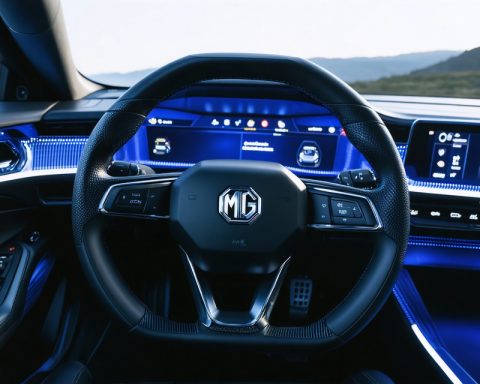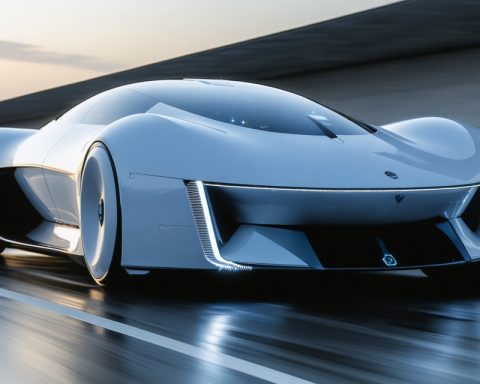- Electric vehicles (EVs) are transforming urban life by reducing noise and air pollution, creating quieter and cleaner cities.
- Infrastructure changes are crucial, with charging stations becoming prevalent and powered increasingly by renewable energy.
- Economic benefits include job creation in manufacturing and technology, as well as lower maintenance costs for consumers.
- Environmental impacts are significant, with reduced greenhouse gas emissions and improved air quality in cities.
- The future holds promise as challenges like equitable charging station distribution and battery technology improvements continue to be addressed.
- The EV revolution is a catalyst for reimagining urban spaces, enhancing public transportation, and fostering sustainable communities.
Electric vehicles (EVs) glide through urban streets like whispers in a bustling world. These machines, once dismissed as mere novelties, now herald a revolution with potential to reshape city life. Picture a city where the air is pure, the streets are calm, and the relentless symphony of engine noise is but a distant memory. This vision becomes more attainable each day as EVs steadily charge into the mainstream.
Visualizing Change
Imagine standing on a busy corner in a sprawling metropolis. Instead of clattering engines and billowing exhaust, you hear…nothing. EVs roll silently by, their sleek forms reflecting sunlight as they pass. The air feels cleaner, almost fresh, as electric buses glide past smoothly and electric taxis whisk passengers to their destinations. Cityscapes begin to transform, the hustle replaced by a serene hum that allows city dwellers to thrive.
The Infrastructure Revolution
This quiet revolution depends heavily on reimagined infrastructure. Charging stations sprout like urban flora, strategically placed to fuel this new breed of transport. Cities not only embrace the challenge but relish it, turning parking lots and curbsides into charging hubs. Governments funnel resources to expand the grid, while energy companies innovate to meet the rising demand. Solar panels and other renewable energy sources increasingly power these stations, creating a sustainable cycle from source to street.
A Boost for the Economy
The ripple effect touches every part of the economy. Job creation surges in manufacturing, technology, and infrastructure sectors. Innovations in battery technology, essential to store energy and extend range, have the potential to revolutionize other industries. Consumers benefit from lower maintenance costs and government incentives, making EV ownership more accessible than ever before.
The Environmental Impact
Most striking is the environmental shift. Cities known for smog and pollution embrace cleaner air, thanks to slow yet steady reduction in carbon emissions. Electric buses and fleets replace diesel-powered counterparts, leading to significant drops in greenhouse gases. Public awareness rises, driving demand for sustainable urban policies and transportation options, fostering a culture of conservation and environmental stewardship.
The Road Ahead
The path forward brims with promise. While challenges persist—such as ensuring the equitable distribution of charging stations and refining battery technology—the momentum propels us towards a future where EVs are not just vehicles, but harbingers of urban renewal. City planners re-envision public transportation, cycling and walking paths expand, and urban green spaces proliferate, creating vibrant, livable communities for all.
The electric vehicle revolution isn’t just a shift in the marketplace; it’s a transformation of urban life as we know it. Embrace the silence. Welcome the change. The future of our cities depends on it.
Why the Quiet Revolution of Electric Vehicles (EVs) Will Transform Cities
As electric vehicles (EVs) silently navigate the busy streets of our urban landscapes, the notion of a cleaner, quieter, and more sustainable city becomes increasingly plausible. The transition from gas-powered engines to electric propulsion is more than just an automotive trend; it’s a paradigm shift in urban living. The ripple effects of this transformation extend far beyond environmental benefits, reshaping infrastructure, economies, and societal norms. Here’s a deep dive into the various dimensions of this electric revolution that was not fully explored in the original article.
How to Embrace the Electric Future
1. Understanding EV Infrastructure Needs:
– Charging Stations: The establishment of more efficient and accessible charging stations is crucial. Residential areas, workplaces, and public venues need to be equipped with fast chargers to accommodate daily commuter needs. Innovations like wireless charging pads for cars are in development, offering a glimpse into the future of EV charging.
– Smart Grids: Implementing smart grid technology enables better management of energy distribution, helping to balance peak loads and integrate renewable energy sources effectively. This technology ensures a stable and efficient energy supply for urban centers.
2. Real-World Use Cases:
– Fleet Electrification: Cities like Amsterdam are leading the charge by converting public transportation fleets to electric, including buses and cabs. This reduces operational costs and lowers emissions significantly.
– Last-Mile Delivery: Electric vans and bikes are becoming popular for last-mile delivery services, providing quiet and efficient means of transportation in congested urban areas.
Market Forecasts & Industry Trends
– Increasing Market Share: According to a study by Bloomberg New Energy Finance, EVs are expected to make up 58% of global passenger vehicle sales by 2040. This surge will be driven by falling battery costs and government policies favoring cleaner transportation.
– Advancements in Battery Technology: Solid-state batteries promise longer ranges and shorter charging times, which could overcome current barriers to adoption. Companies like Toyota and QuantumScape are investing heavily in this technology.
Reviews & Comparisons
– EV Models: Leading EV models such as Tesla’s Model 3, the Ford Mustang Mach-E, and the Nissan Leaf continue to receive high praise for their range, efficiency, and features. With new entrants like the Lucid Air and Rivian R1T, competition is driving innovation and choice in the EV market.
– Cost Efficiency: While EVs may have a higher upfront cost, the total cost of ownership (TCO) is generally lower than traditional vehicles due to reduced fuel and maintenance costs.
Controversies & Limitations
Equity Concerns:
– Ensuring equal access to EV infrastructure across urban areas, particularly in underserved communities, remains a challenge.
– The environmental impact of lithium mining for batteries raises sustainability concerns, though recycling and reuse initiatives are in progress.
Security & Sustainability
– Cybersecurity: As cars become more connected, protecting them from cyber threats becomes crucial. Automakers are investing in robust cybersecurity measures to safeguard drivers’ data and vehicle operations.
– Sustainable Manufacturing: Using recycled materials in car production can lower carbon footprints. Companies are exploring sustainable material sourcing in their supply chains.
Actionable Recommendations
– Explore Incentives: Many governments offer tax rebates and incentives for purchasing EVs. Research local programs to take advantage of financial benefits.
– Charge While Shopping: Install charging points at retail centers, allowing consumers to charge their vehicles while conducting errands.
– Stay Informed: Follow developments in battery technology and EV infrastructure improvements to make informed decisions about future-proofing your transportation needs.
The revolution of electric vehicles is not merely about adopting a new technology; it’s about redefining urban life and sustainability. From infrastructure revamps to economic shifts, the journey toward an e-mobility future is accelerating. Embrace the transformation and prepare for the silent, clean cities of tomorrow.















